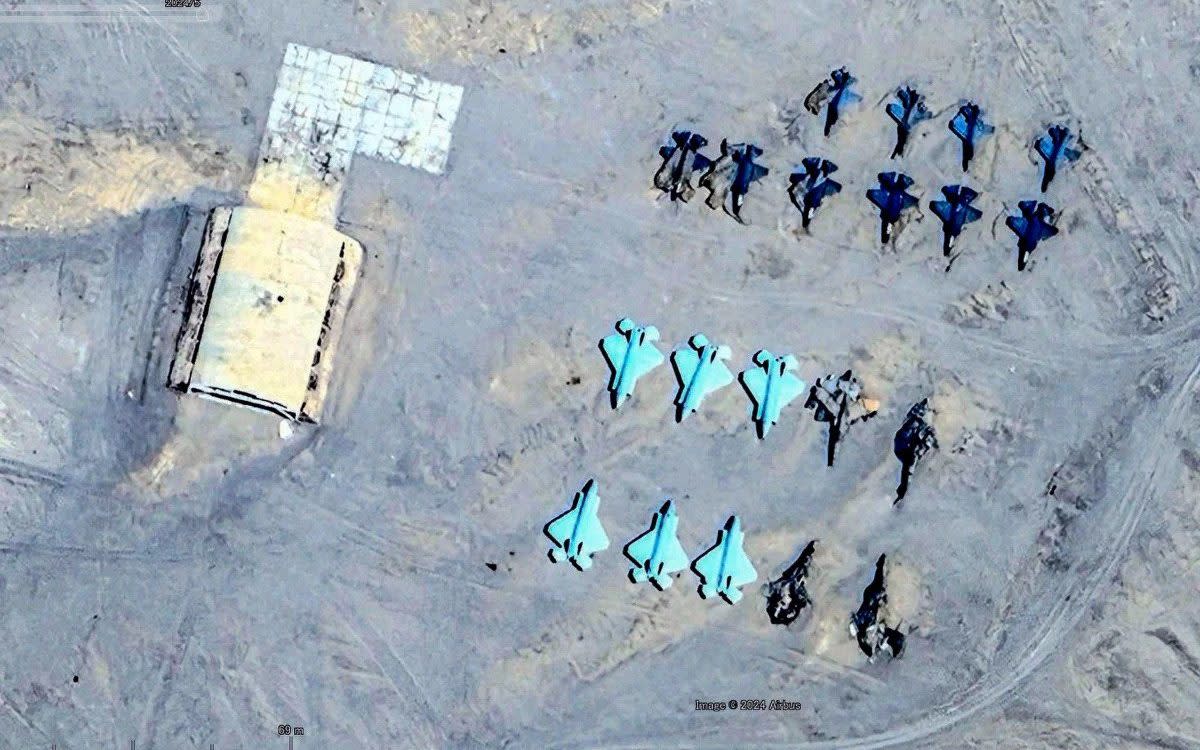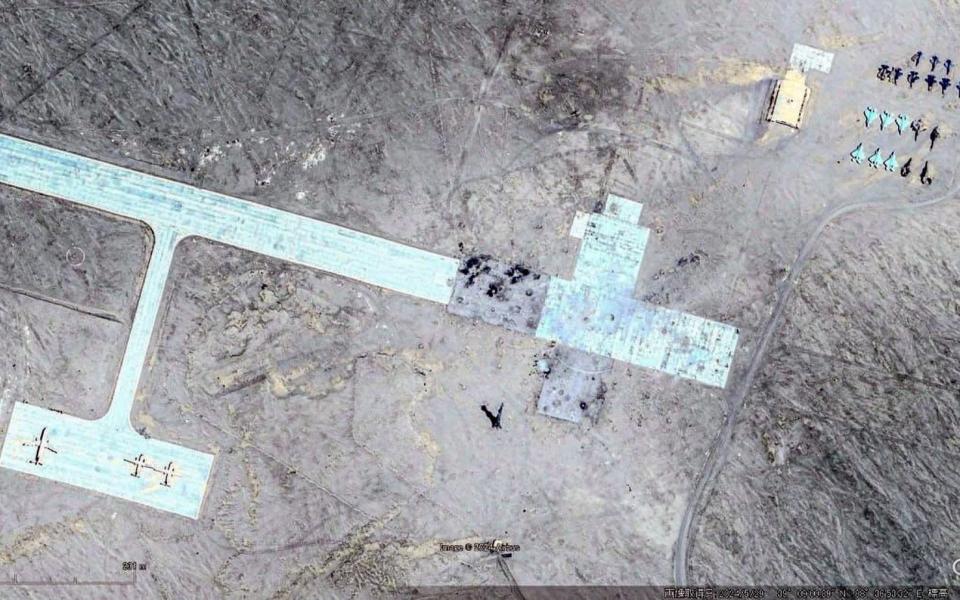China carries out ‘target practice’ on mock US fighter jets

China has installed mock US fighter jets in a remote desert area that it appears to be using for target practice, recent satellite images suggest.
The images, taken by Planet Labs, a tech firm in San Francisco, show models of F-35s and F-22s, the United States’ most advanced combat aircraft, next to scorch marks on a fake runway, as if it had been struck by missiles. Several of the jet frames also look damaged.
The location was identified by Clash report, a Turkey-based military blog site, as Qaklik in the Taklamakan Desert in south-west Xinjiang province.
The drills reflected Chinese military efforts to build up long-range ballistic and cruise missile systems to neutralise threats from US naval forces and its “power projection capabilities”, Collin Koh, from the S Rajaratnam School of International Studies in Singapore, told the South China Morning Post.

Beijing has not confirmed any details of the recent reports, but the desert is known to have hosted military tests in the past.
This includes full-scale mock-ups of an American Ford-class aircraft carrier and two Arleigh Burke-class destroyers that were spotted three years ago by space technology company Maxar.
A decade ago, satellite images also confirmed that China had constructed a building closely resembling Taiwan’s presidential office along with a street grid with similarities to the capital Taipei.
Chinese state media later broadcast People’s Liberation Army (PLA) troops practising an assault on the building, which was constructed at the Zhurihe combat training base in Inner Mongolia.
China’s ruling Communist Party claims Taiwan as its own territory even though it has never governed there and the democratic island functions like any other nation with its own government, military and currency.
‘Decisive enabler’
US forces and their allies have also trained in strategies to defend Taiwan from a Chinese invasion, as they focus on countering Beijing’s expanding influence and military footprint in the Indo-Pacific region.
The US Special Operations Command staged its first-ever Taiwan conflict scenario in Fort Bragg, also known as Fort Liberty, last year.
As China deepens its strategic ties with Russia, military tensions spilled over into a war of words between Beijing and Nato this week, after the Western security alliance warned China to stop being a “decisive enabler” of the Kremlin’s war machine against Ukraine.
As Nato’s 32 leaders wrapped up a Washington summit this week, to which Volodymyr Zelensky was invited, the organisation posted on its X account, formerly Twitter, that it would deepen ties with South Korea, Japan, New Zealand and Australia “to stand up to authoritarianism and the growing alignment of Russia, China, Iran and North Korea”.
NATO is stronger and safer when it stands with like-minded partners.
We are deepening our ties with 🇦🇺 🇯🇵 🇳🇿 🇰🇷 to stand up to authoritarianism and the growing alignment of Russia, China, Iran and North Korea#NATOSummit pic.twitter.com/SDIixfskrr— NATO (@NATO) July 11, 2024
China’s foreign ministry hit back on Thursday, accusing Nato of “biases, smears and provocations” and said it was burdened by “self-made” security anxieties.
Lin Jian, the foreign ministry’s spokesman, said: “The tragedies of Afghanistan and Libya make it clear that wherever Nato shows up, turmoil and chaos will follow,” adding that the security body was now disrupting peace and stability in the Asia-Pacific.
China’s military build-up and heavy investment in naval capacities in recent years have been accompanied by its more assertive behaviour in the South China Sea and Pacific, leading to more confrontations with the US and its allies in the region.
The PLA has also been extending its reach beyond the Indo-Pacific.
This week, Belarus hosted Chinese troops for a joint military drill near its border with Nato member Poland, the first such exercise reflecting growing defence ties between the two countries.
Meanwhile, a US coast guard cutter on routine patrol in the Bering Sea spotted several Chinese military ships within the US exclusive economic zone near Alaska.
Rear-Adml Megan Dean, Seventeenth Coast Guard District commander, said: “The Chinese naval presence operated in accordance with international rules and norms. We met presence with presence to ensure there were no disruptions to US interests in the maritime environment around Alaska.”

